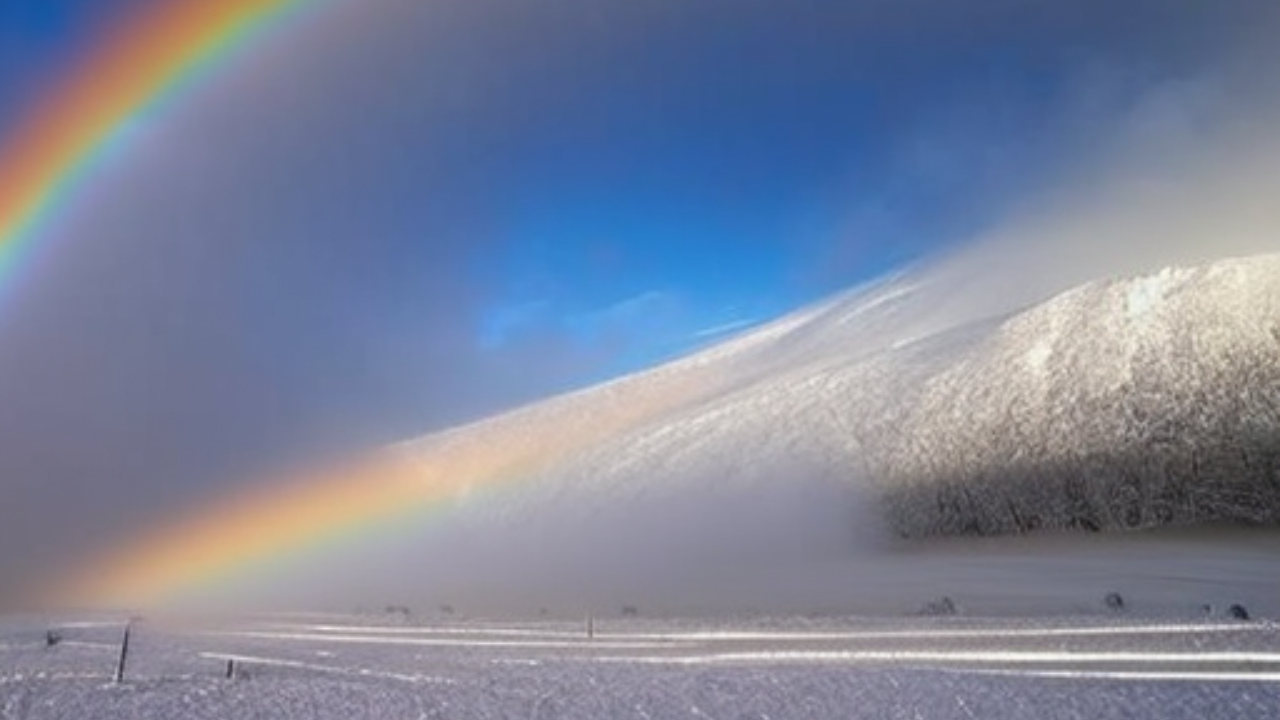The Mystery of Fogbows: Fascinating Facts About This Subtle and Rare Phenomenon

Fogbows, also known as white rainbows or cloud bows, is a beautiful and intriguing meteorological phenomenon. Unlike traditional rainbows, which are bright and colorful, fogbows are subtle and often hard to spot. They are created by the same process as rainbows, but with a few key differences.
In this article, we will explore the fascinating facts about fogbows, from how they are formed to where to spot them around the world.
What are Fogbows?
Fogbows are a rare atmospheric phenomenon that is similar to rainbows. They are also known as white rainbows, ghost rainbows or cloud rainbows. Unlike rainbows, fogbows are formed by the diffraction of sunlight through tiny water droplets that are present in fog or mist. The droplets that form fogbows are much smaller than those that form rainbows, which results in a different appearance.
How are Fogbows Formed?
Fogbows are formed when sunlight passes through tiny water droplets that are present in fog or mist. The droplets in the fog are much smaller than those in rain, and as a result, the light that passes through them is diffracted differently.
The droplets in the fog are so small that they cannot produce the full spectrum of colors that are present in a rainbow. Instead, fogbows are typically white or have a faint bluish tint around the edges.
The Colors and Appearance of Fogbows
Fogbows are similar to rainbows in shape, but they are usually much fainter and have a white or bluish hue. They lack the bright, vivid colors of a rainbow because the droplets that form them are much smaller. Fogbows are also much larger than rainbows and often appear as a large, pale arc in the sky.
The Symbolic and Spiritual Significance of Fogbows
Fogbows are not as well-known as rainbows, so they do not have as much symbolism attached to them. However, they are still considered to be a beautiful and mystical phenomenon. In some cultures, fog is associated with mystery and the unknown, which adds to the mystical quality of the fogbow.
Some Fascinating Facts About Fogbows
Fogbows are not as well-known as rainbows, but they are still a fascinating phenomenon. Here are some interesting facts about fogbows:
- Fogbows are also known as white rainbows, ghost rainbows or cloud rainbows.
- Fogbows are typically much larger than rainbows.
- Fogbows have a white or faint bluish tint around the edges, unlike rainbows which have a full spectrum of colors.
- Fogbows are much rarer than rainbows.
Capturing the Beauty of Fogbows: Tips for Photography
Photographing a fogbow can be a challenge, but the results can be stunning. Here are some tips for capturing the beauty of fogbows in your photographs:
- Look for a location with a clear view of the sky and a lot of fog or mist.
- Use a polarizing filter to reduce glare and enhance the colors of the fog bow.
- Use a tripod to keep your camera steady.
- Use a fast shutter speed to freeze the motion of the fogbow.
Best Places to Spot Fogbows Around the World
Fogbows can occur anywhere where there is fog or mist, but they are more common in certain parts of the world. Here are some of the best places to spot fogbows:
- Scotland: The highlands of Scotland are known for their foggy weather, which makes them a great place to spot fogbows.
- Pacific Northwest: The Pacific Northwest region of the United States is known for its foggy weather, particularly along the coast.
- New Zealand: The South Island of New Zealand is known for its foggy weather and stunning natural landscapes, making it an ideal place to spot fogbows.
- Iceland: Iceland is known for its rugged natural landscapes and unpredictable weather, which can create the perfect conditions for fogbows.
Fogbows may not be as well-known as traditional rainbows, but they are just as captivating. Whether you are a weather enthusiast or simply appreciate the beauty of nature, learning about fogbows can deepen your understanding of the world around you. By understanding the science behind this meteorological phenomenon and knowing where to spot them, you can have a greater appreciation for the subtle and mysterious beauty of fogbows.





